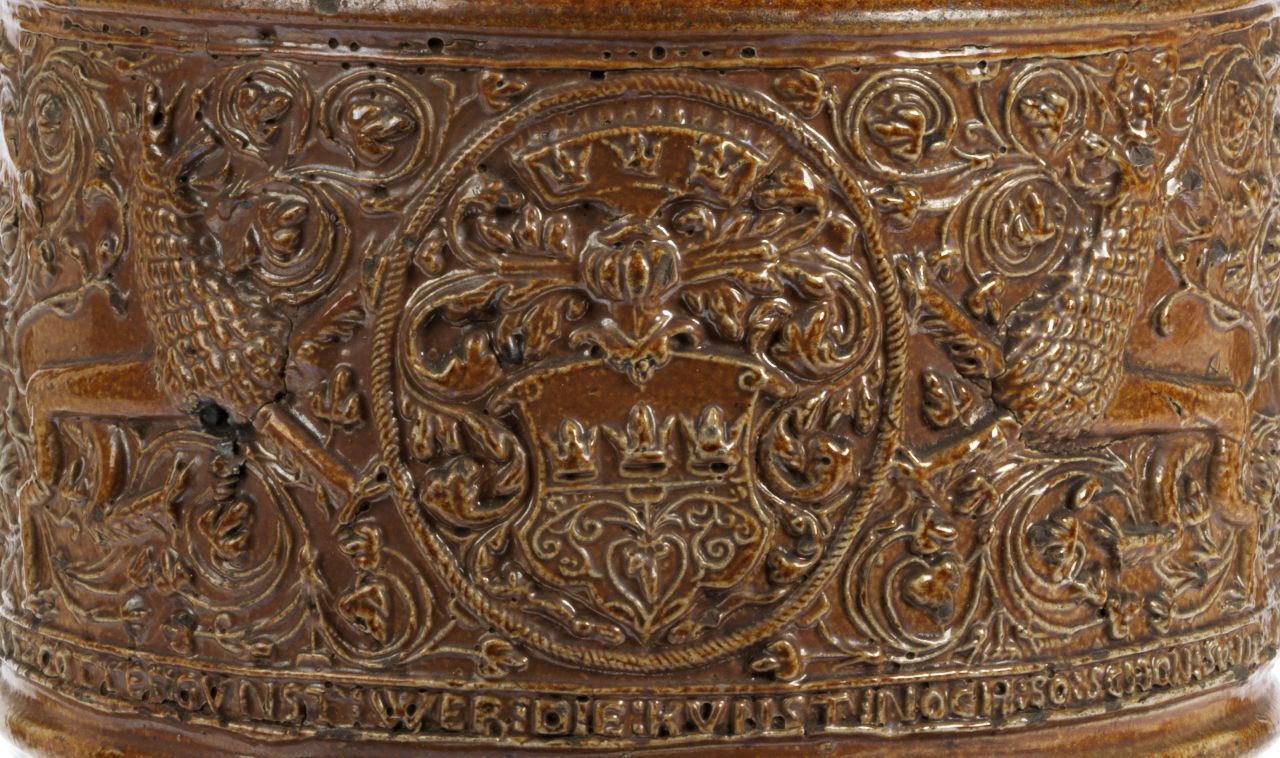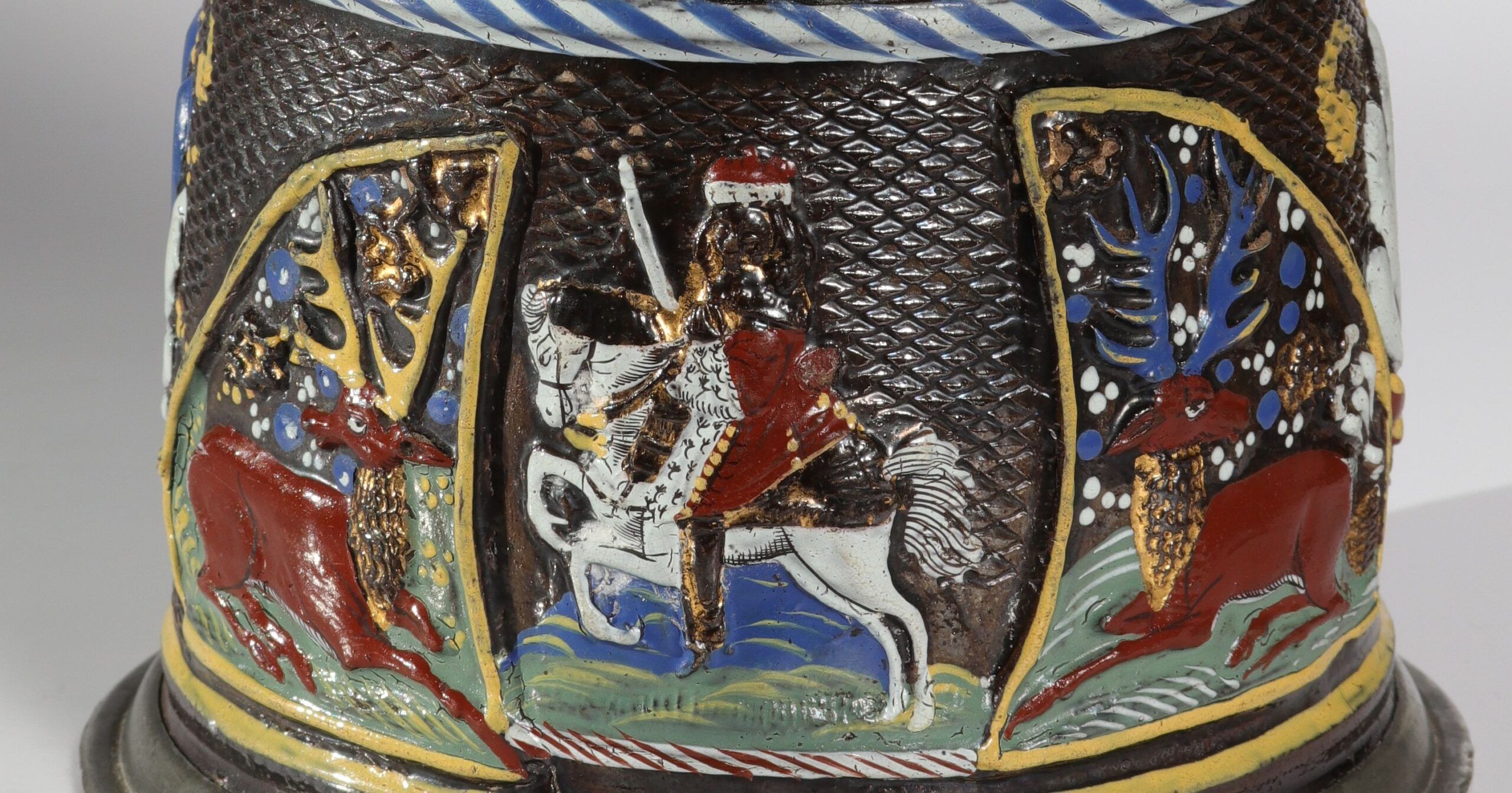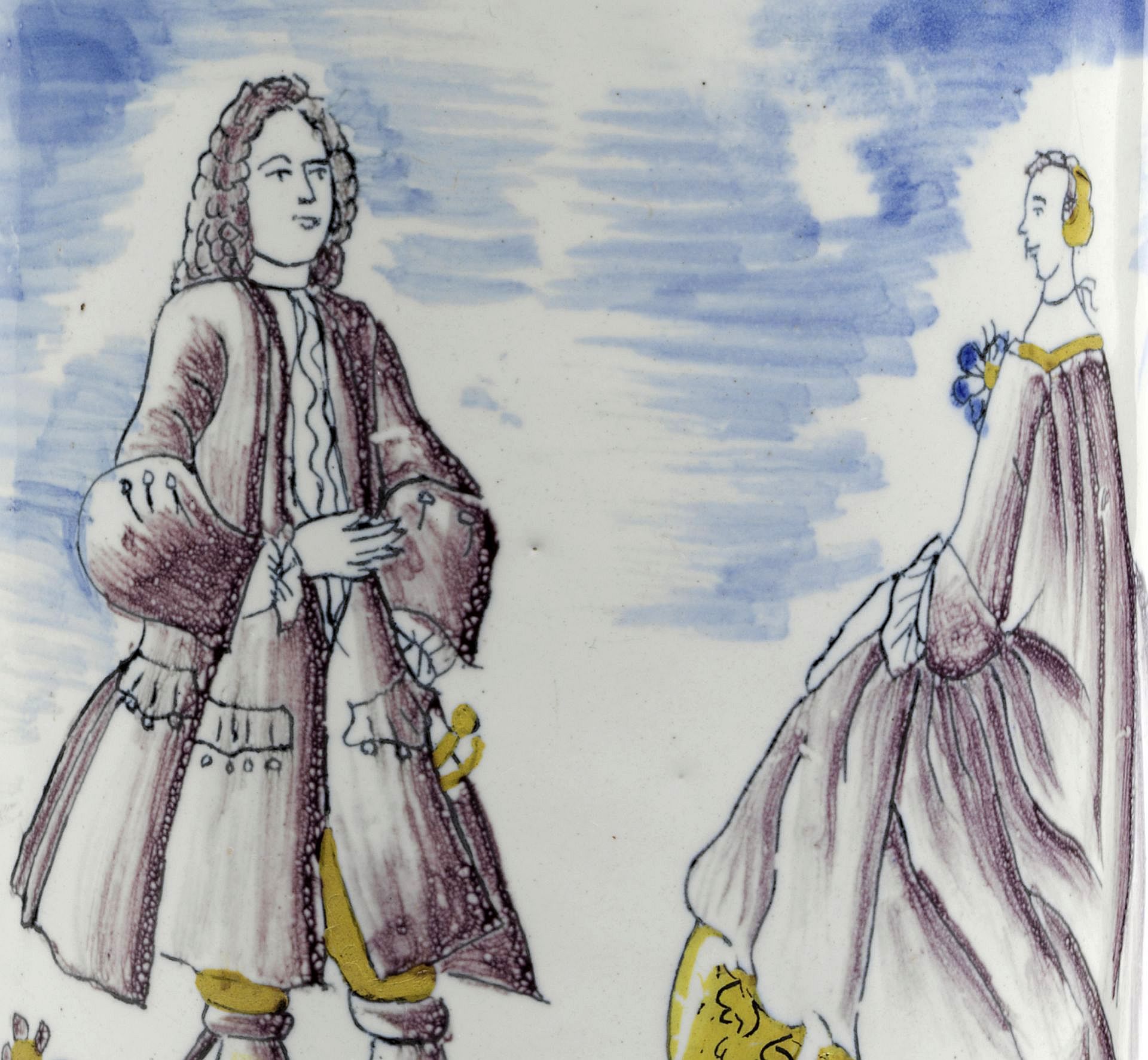Baroque Westerwald Stoneware
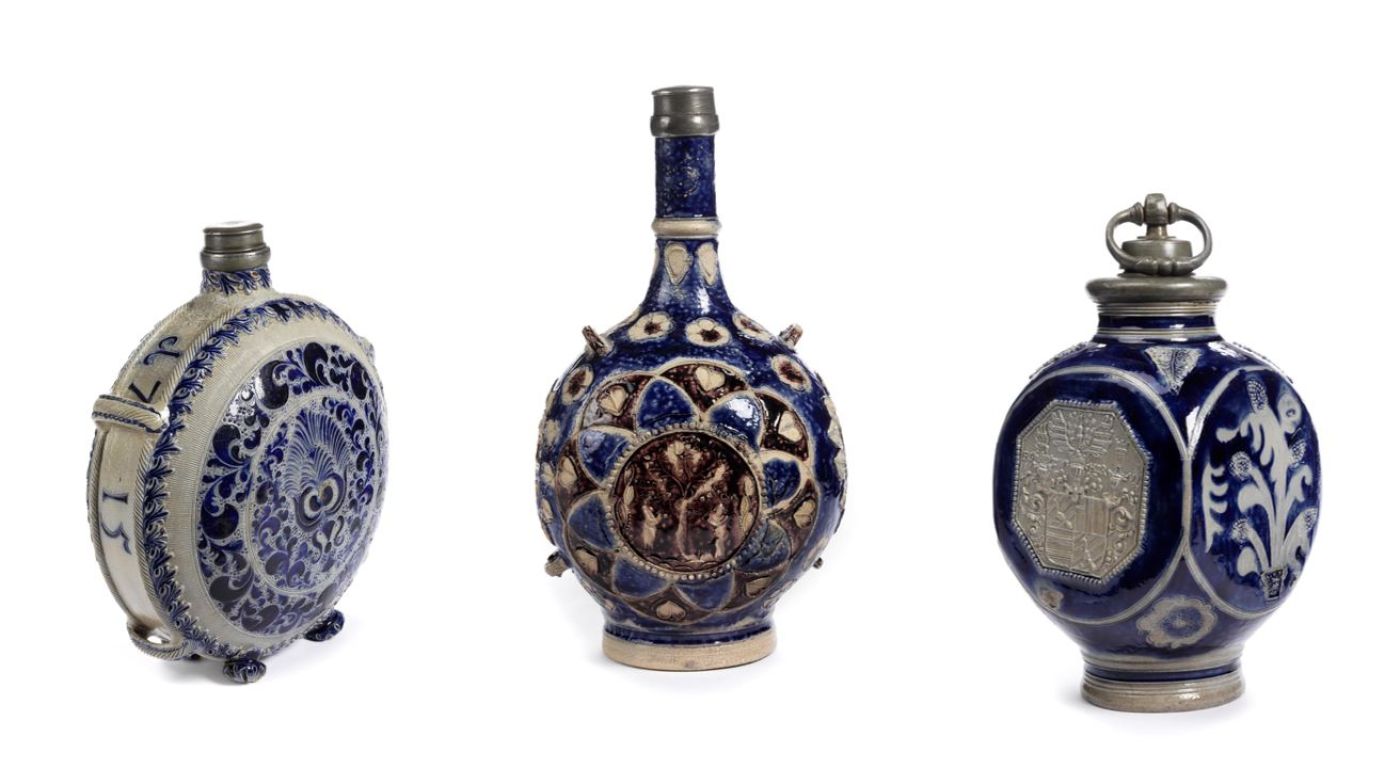
Westerwälder Steinzeug Objekte aus der Zeit des Barock
In the 17th century, the glaze and blue colouring of objects from the Westerwald became rich, fluid and highly lustrous. This is characteristic of stoneware from the Westerwald at that time.
Im 17. Jahrhundert werden Glasur und Blaufärbung der Objekte aus dem Westerwald reichlich, flüssig und von hohem Glanz. Dies ist für das Steinzeug aus dem Westerwald für diese Epoche charakteristisch.
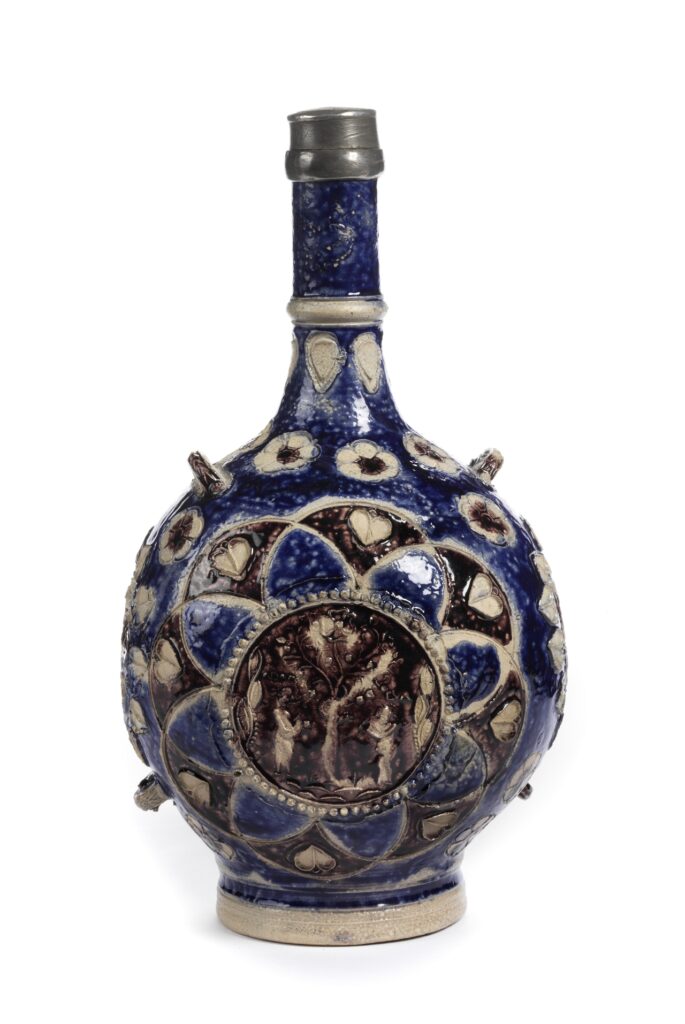
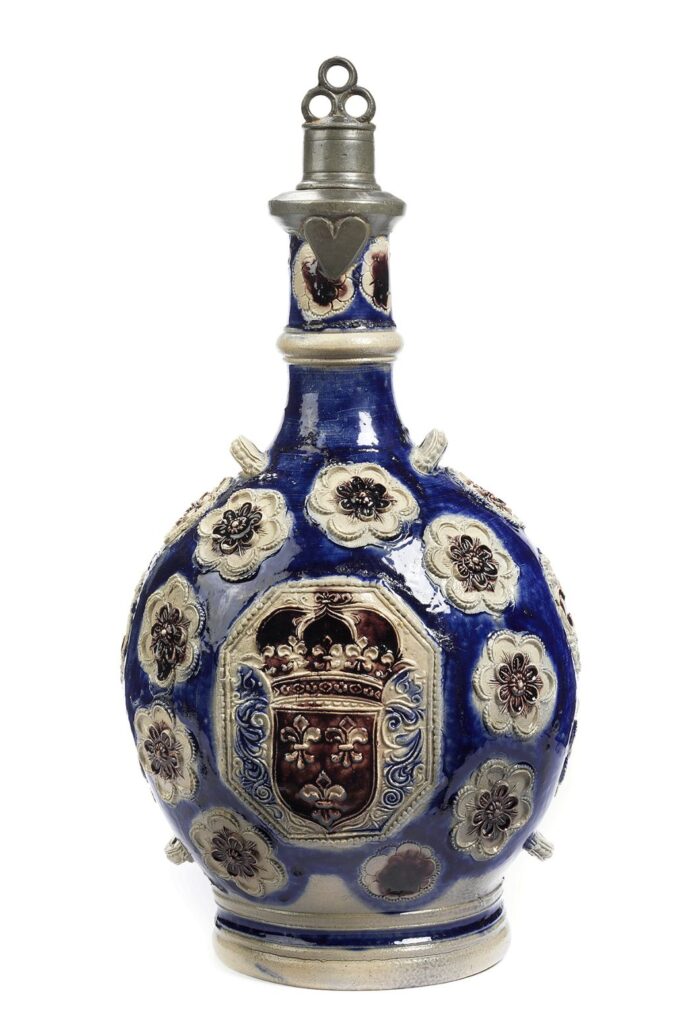
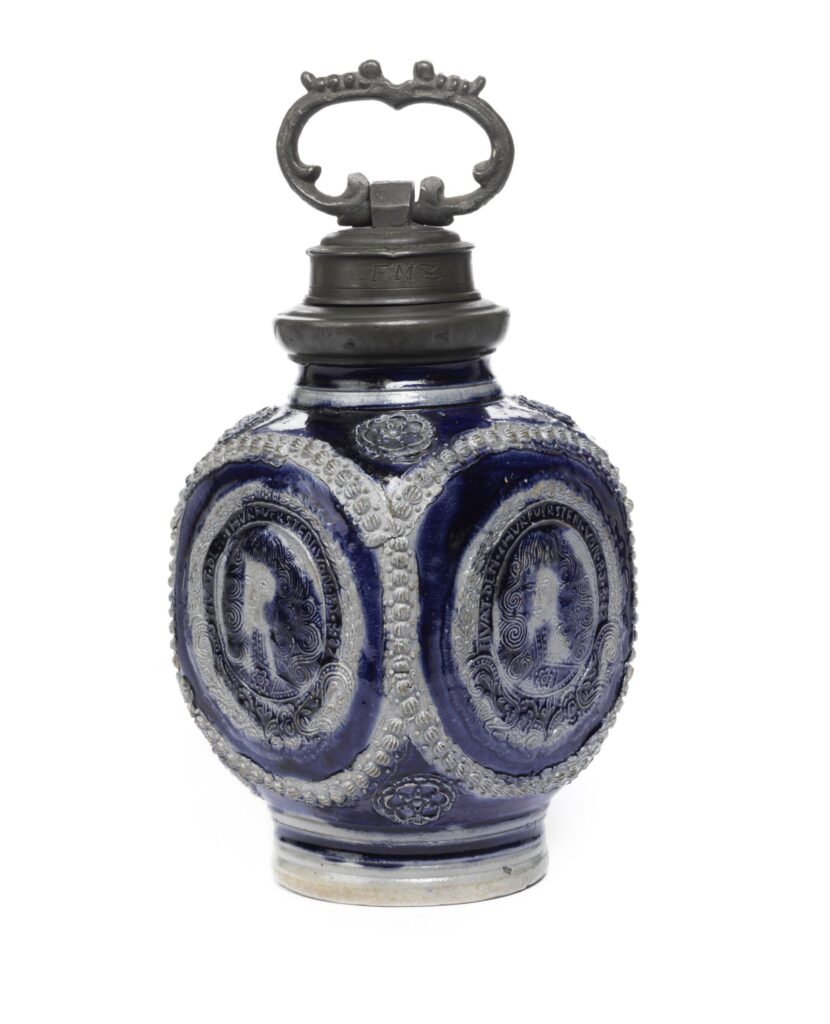
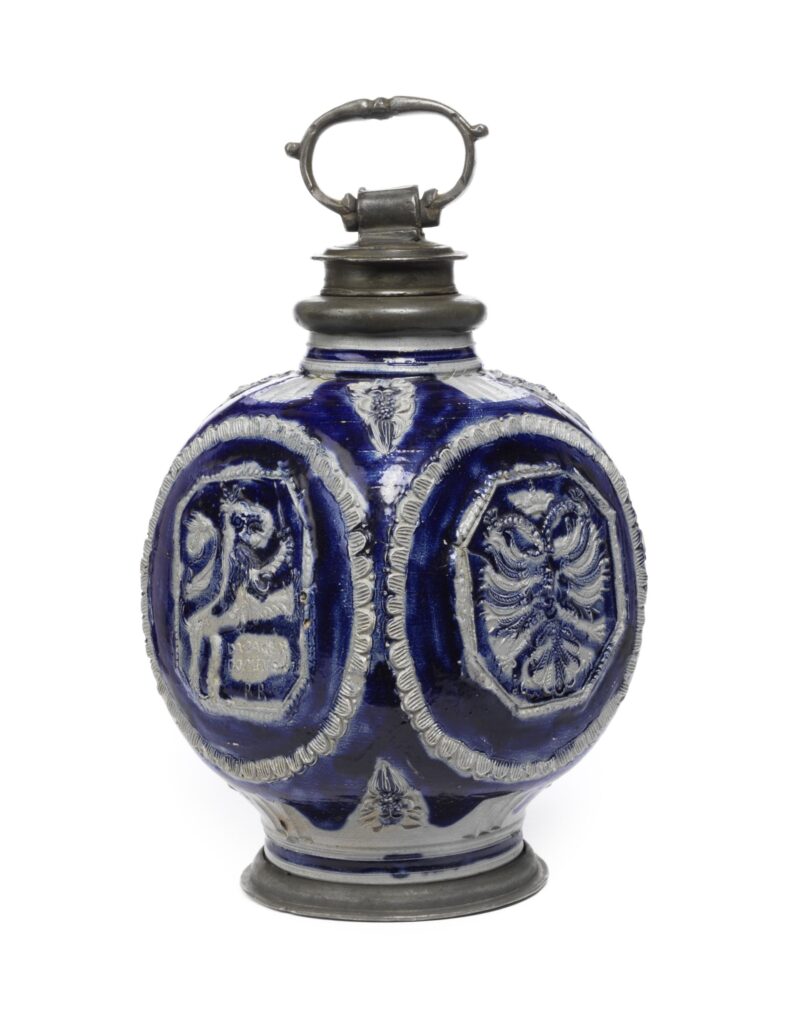
To replace the rich imagery of the Renaissance, the potters of the Baroque period replicated the range of small coverings, rosettes, diamonds, palmettes, buttons, lion masks and angel heads, flowering branches, vases, triangles, stars, grapes and the like ad infinitum.
Als Ersatz für den Bilderreichtum der Renaissance wurde von den Töpfern der Barockzeit der Vorrat an kleinen Belägen, den Rosetten, Rauten, Palmetten, Knöpfchen, Löwenmasken und Engelsköpfchen, Blütenzweiglein, Vasen, Dreiecken, Sternen, Trauben und dergleichen ins Unendliche vervielfältigt.
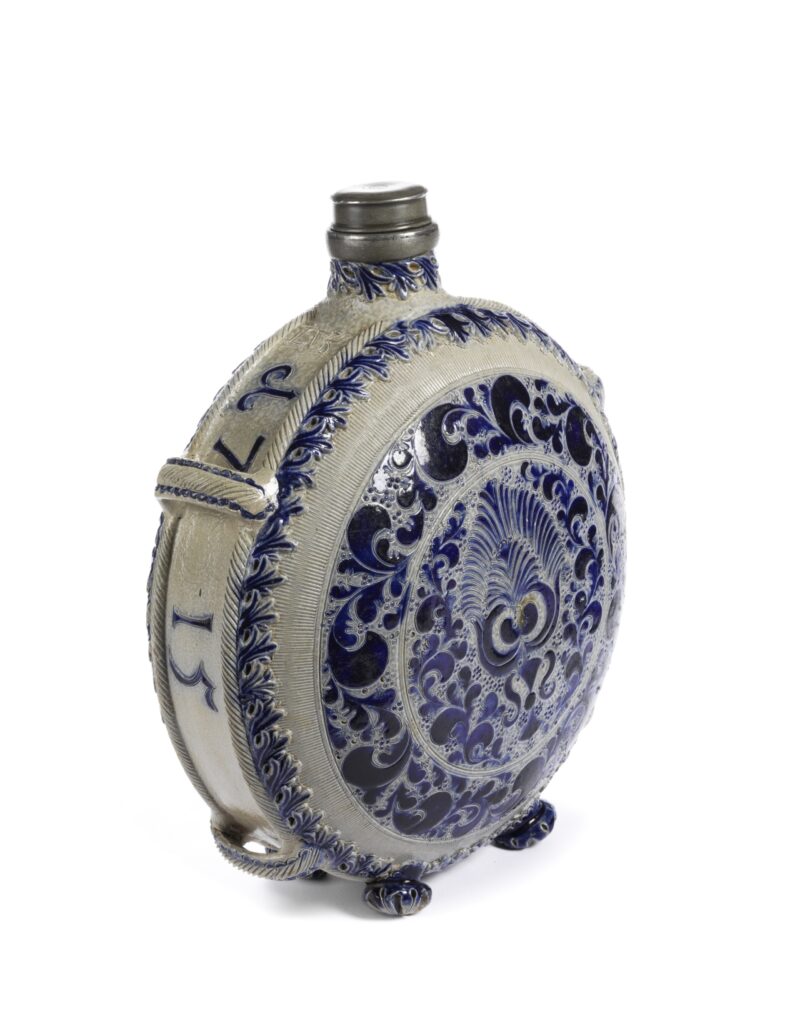
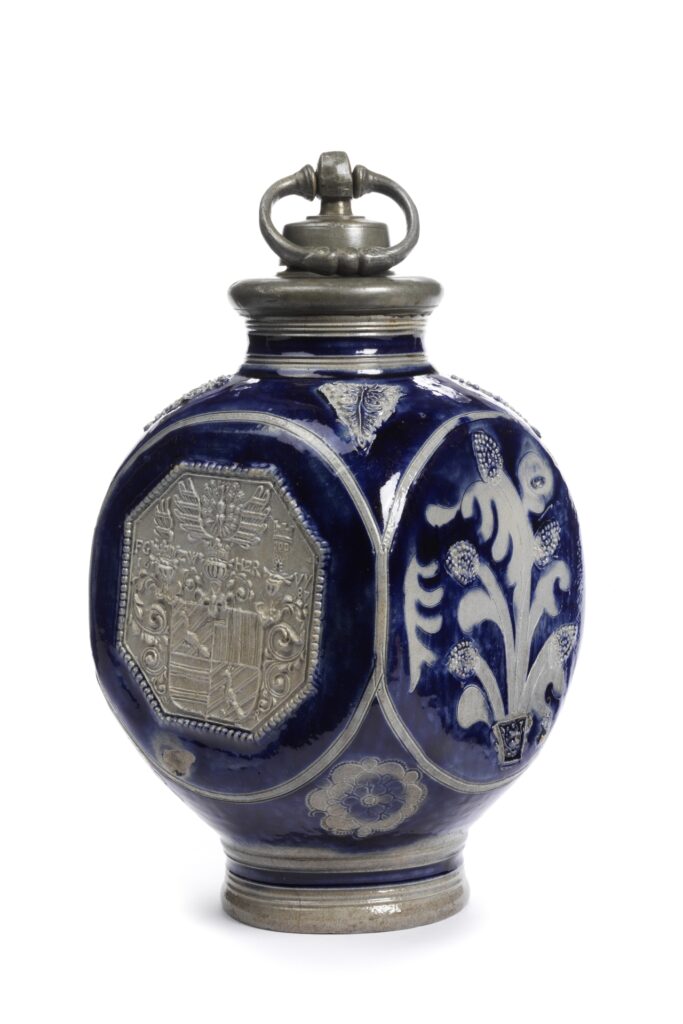
Some of this was already in use as subsidiary ornamentation in Raeren, especially in the workshop of Jan Baldems Mennicken.
Manches davon war als untergeordneter Zierrat schon in Raeren, besonders in der Werkstatt des Jan Baldems Mennicken gebräuchlich.
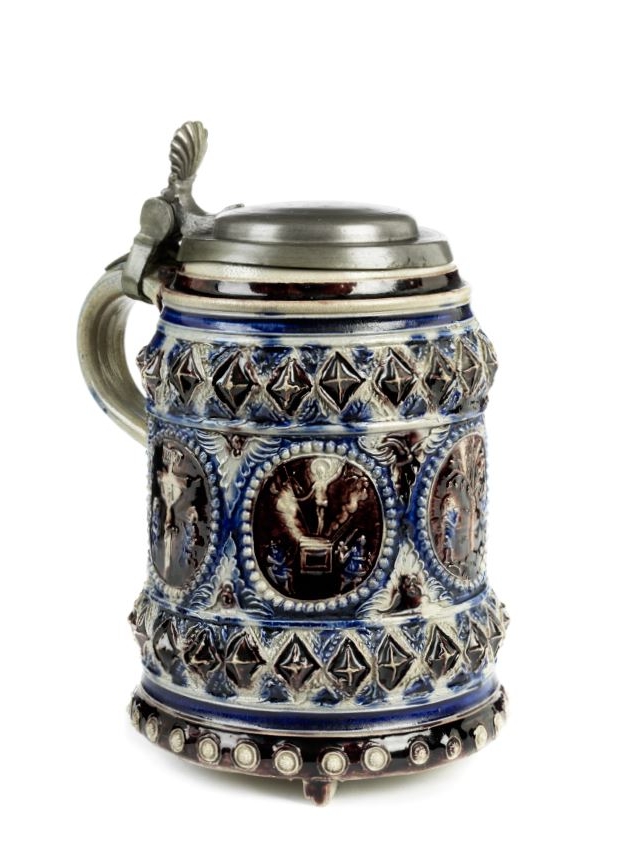
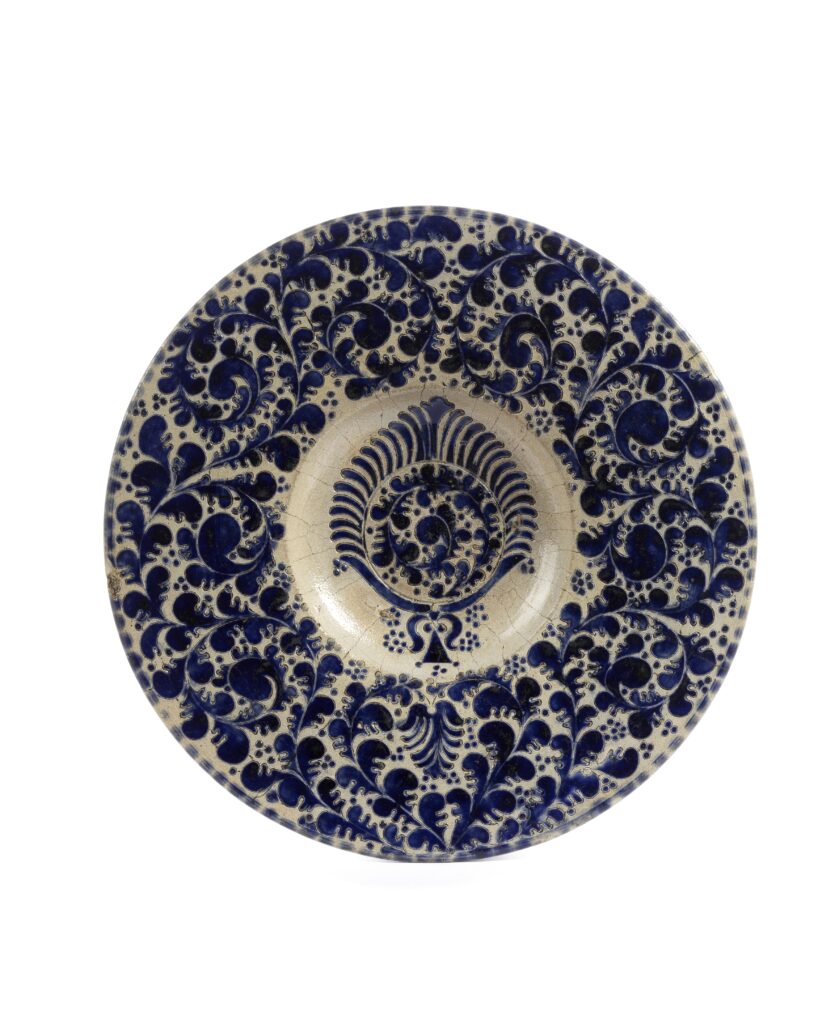
The sculptural effect of these decorations is limited, as the artistic objective is entirely focused on colour. Apart from the grey of the clay, the potters only had the cobalt blue and the manganese violet of the brownstone at their disposal, but both colours developed a depth and lushness enhanced by the the salt glaze that no other European pottery region of the time could match.
Die plastische Wirkung dieser Verzierungen ist gering, denn die künstlerische Absicht ist ganz auf Farbigkeit gerichtet. Den Töpfern stehen neben dem Grau der Masse nur das Kobaltblau und das Manganviolett des Braunsteins zur Verfügung, aber beide Farben entwickeln unter dem Scharffeuer und der Salzglasur eine Tiefe und Saftigkeit, an die keine andere europäische Töpferware der Zeit herankommt.
source: Otto v. Falke (see literature below)
Reference Object Collection Peter Vogt Munich
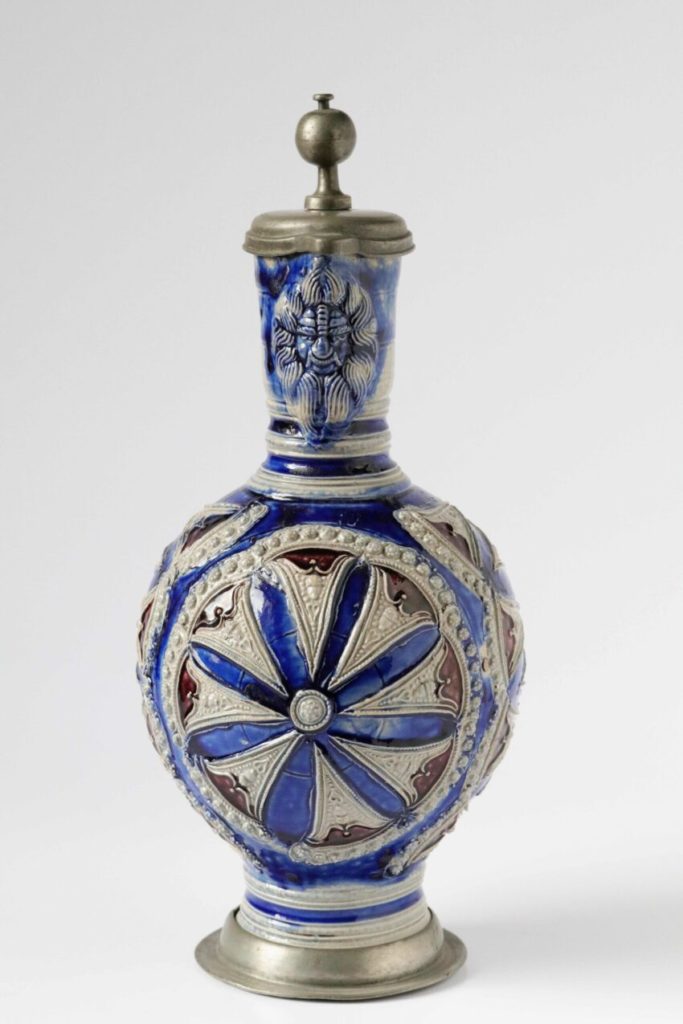
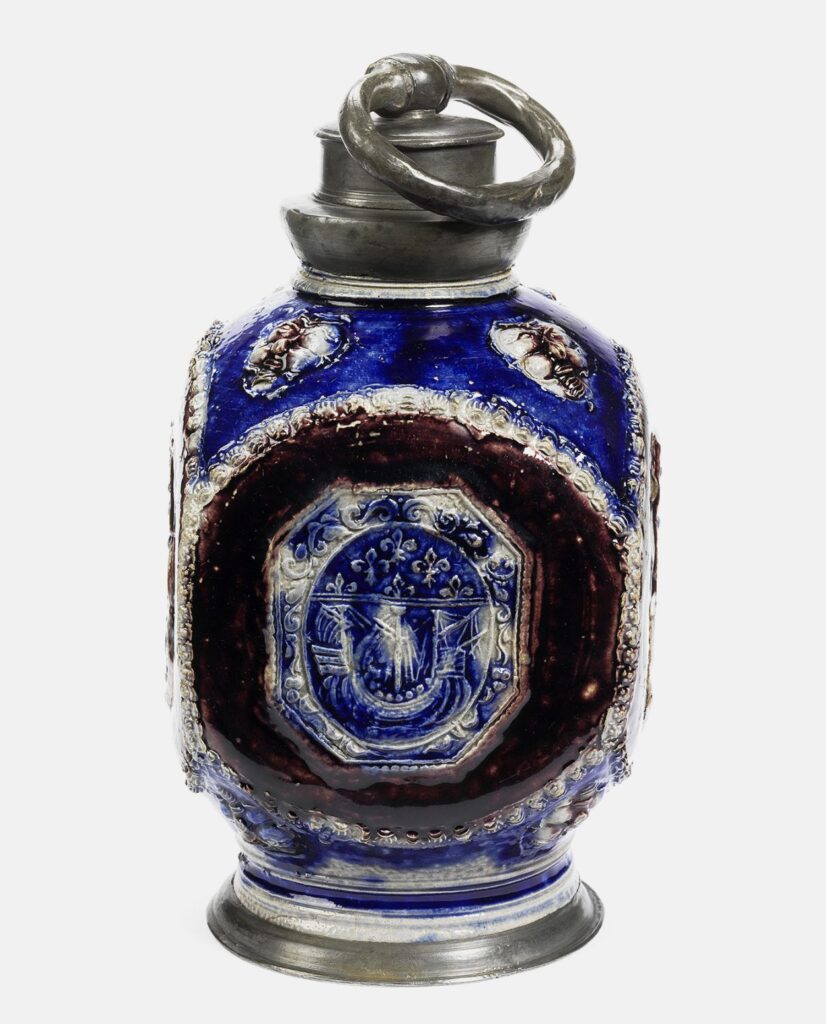
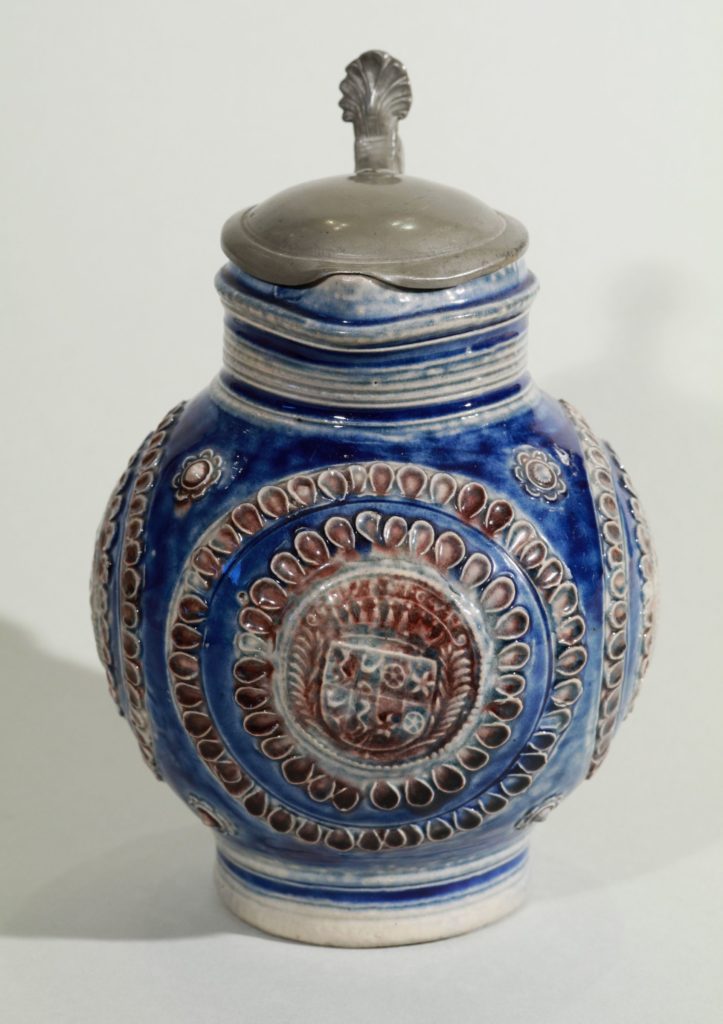
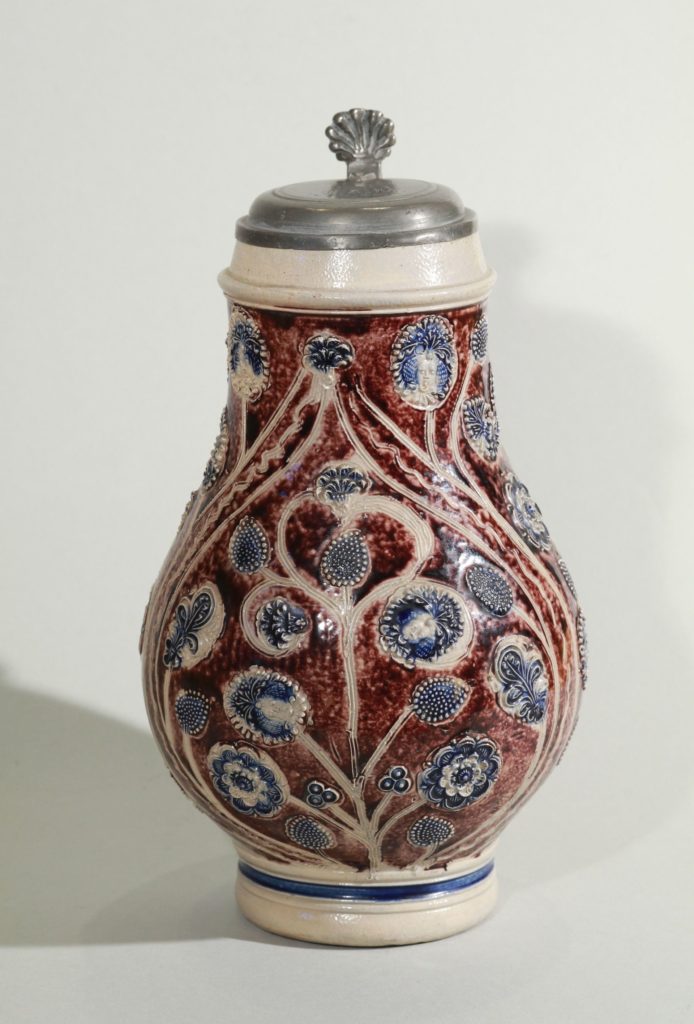
Museum Reference:
VICTORIA & ALBERT MUSEUM, LONDON
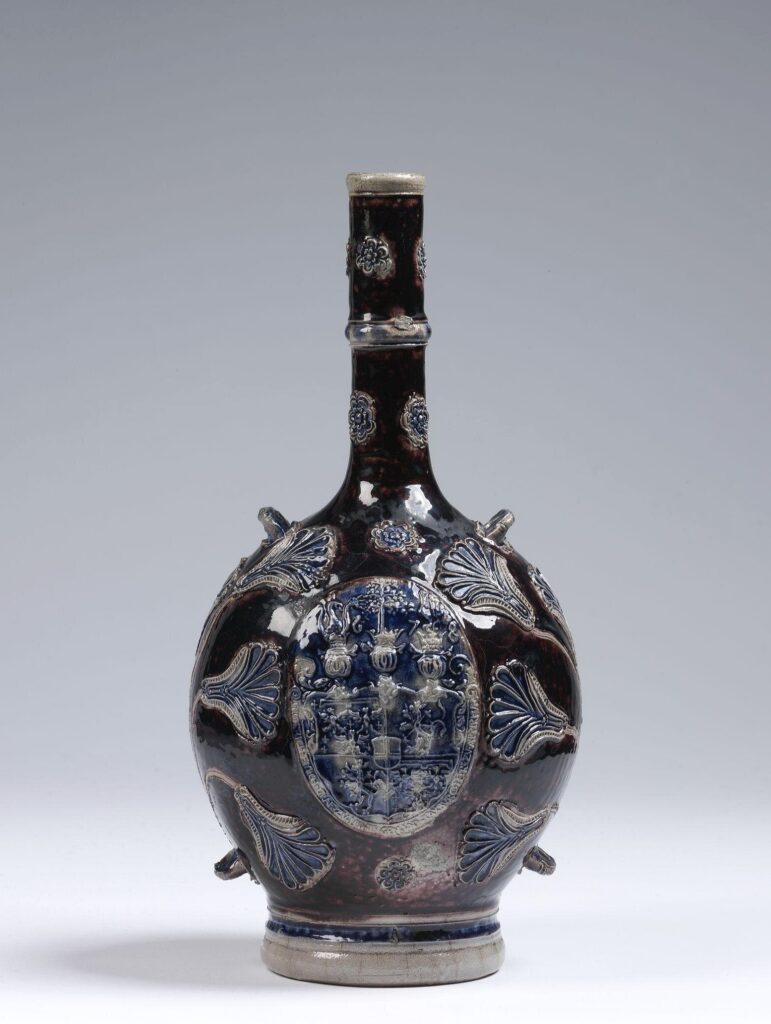
Westerwald Pilgrim bottle ca. 1678
with the arms of Frederick Emich, Count of Leiningen and Dagsburg, and Lord of Aspremont
MARKS AND INSCRIPTIONS
‘FRIDERICH . EMICH . GRAF . ZU . LEININGEN . UND . TAXBURG . HERR . ZU . APPIRMUN.’
https://collections.vam.ac.uk/item/O160860/pilgrim-bottle-unknown/
© Victoria and Albert Museum, London
RIJKSMUSEUM, AMSTERDAM
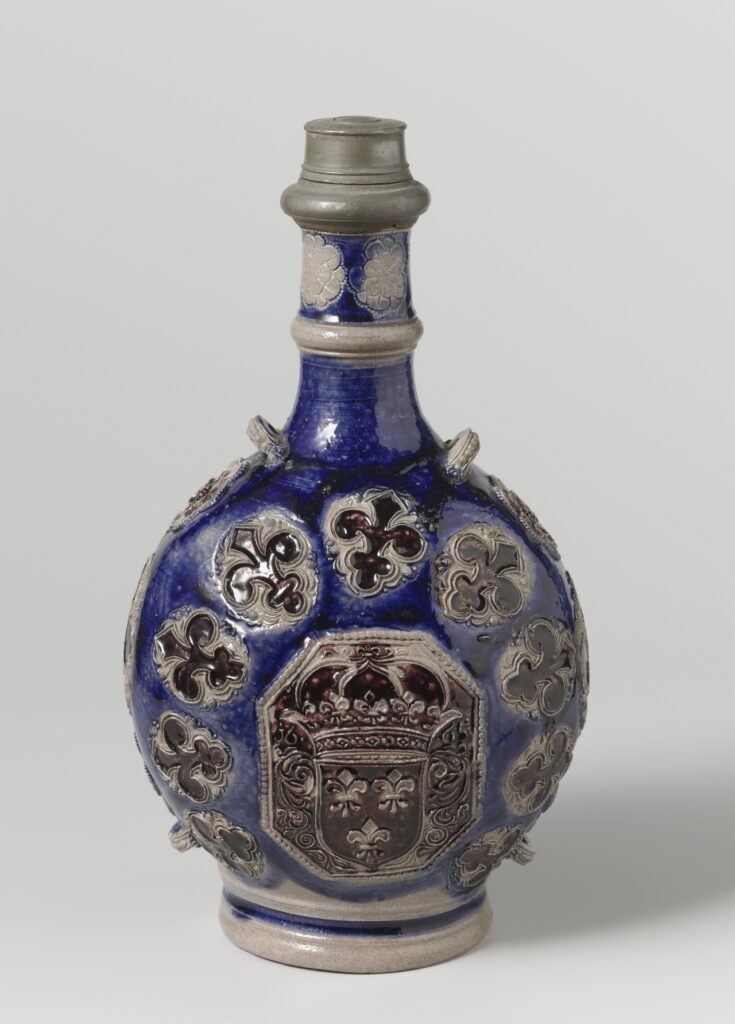
Westerwald Pilgrim bottle 1665
with the Arms of France
http://hdl.handle.net/10934/RM0001.COLLECT.243676
© Rijksmuseum, Amsterdam
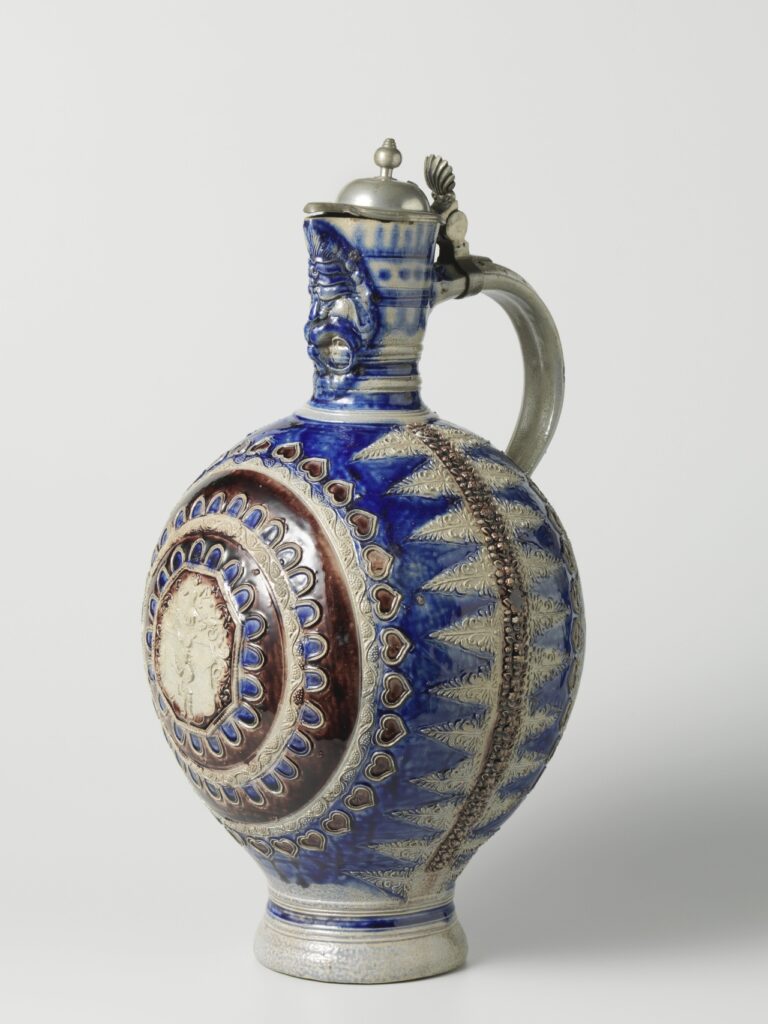
Westerwald Jug with a coat of arms
c. 1650 – c. 1670
among concentric circles, mark: ‘C.H.’,
http://hdl.handle.net/10934/RM0001.COLLECT.245904
© Rijksmuseum, Amsterdam
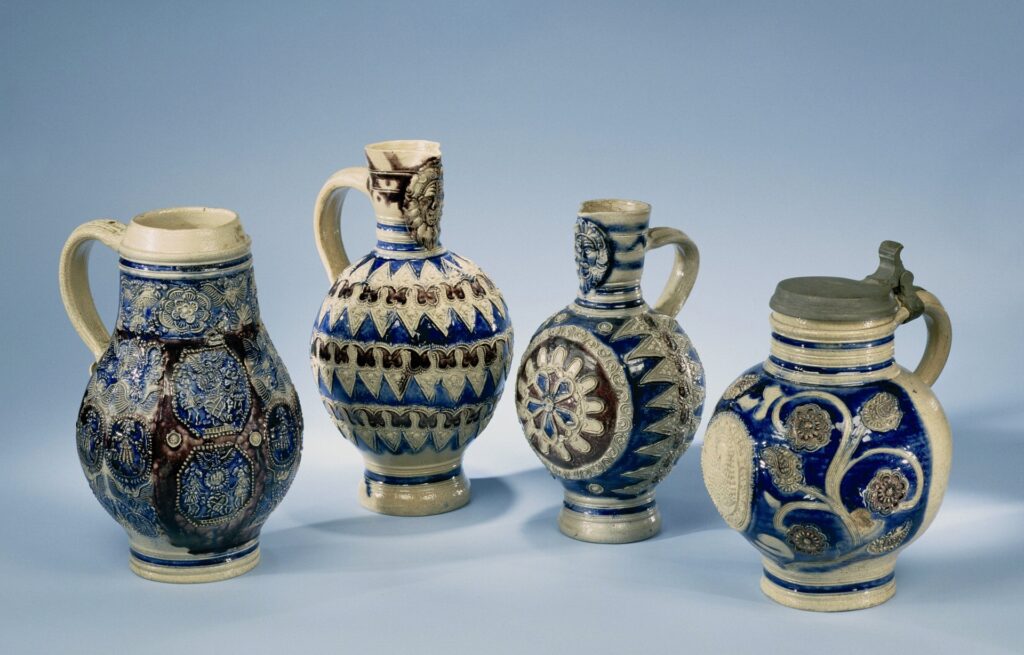
© Rijksmuseum, Amsterdam
Jug with a lion’s head and stylized foliate ornamentation, anonymous, c. 1650 – c. 1699
(link to object online)
Literature:
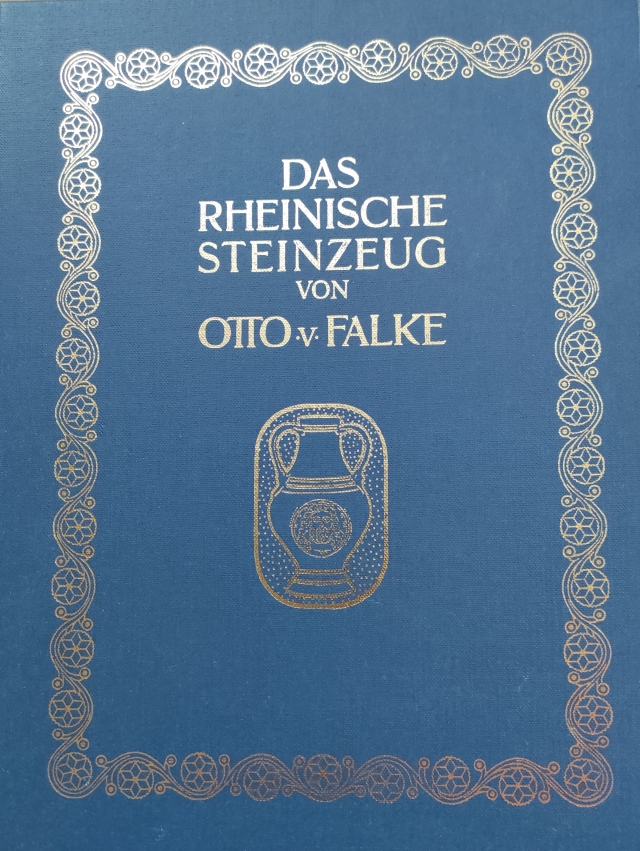
Das Rheinische Steinzeug Otto von Falke, Berlin 1908
Volume 2 S. 109 ff
https://archive.org/details/dasrheinischeste01falk
digital version of the book Volume 1 and 2 – Internet Archive
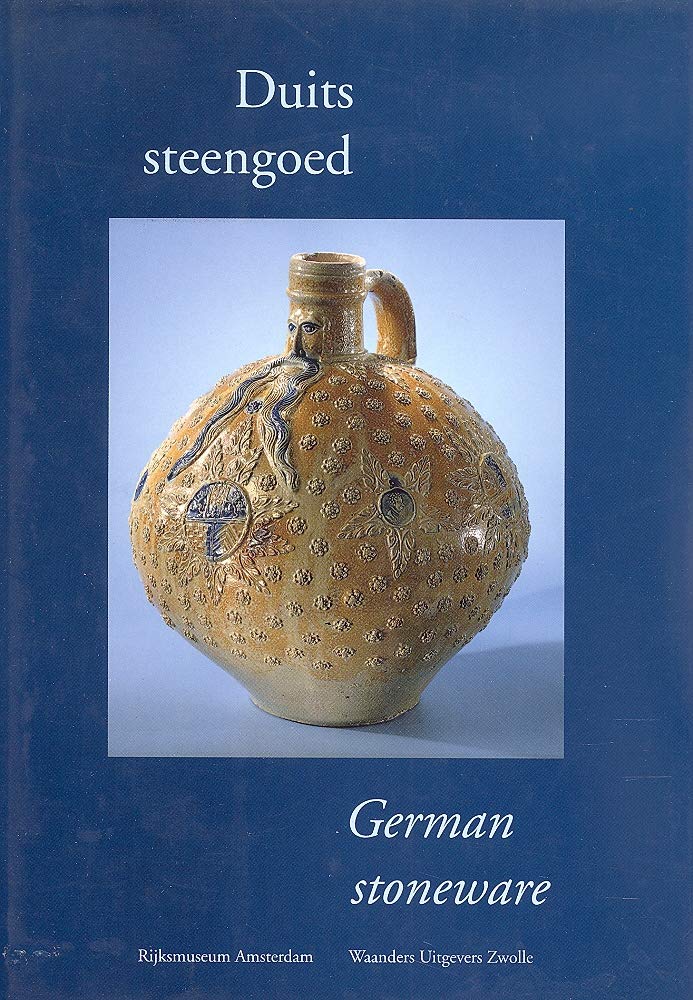
Duits steengoed (1996), Ekkart Klinge, Amsterdam Zwolle : Waanders , cop. 1996 Rijksmuseum Amsterdam
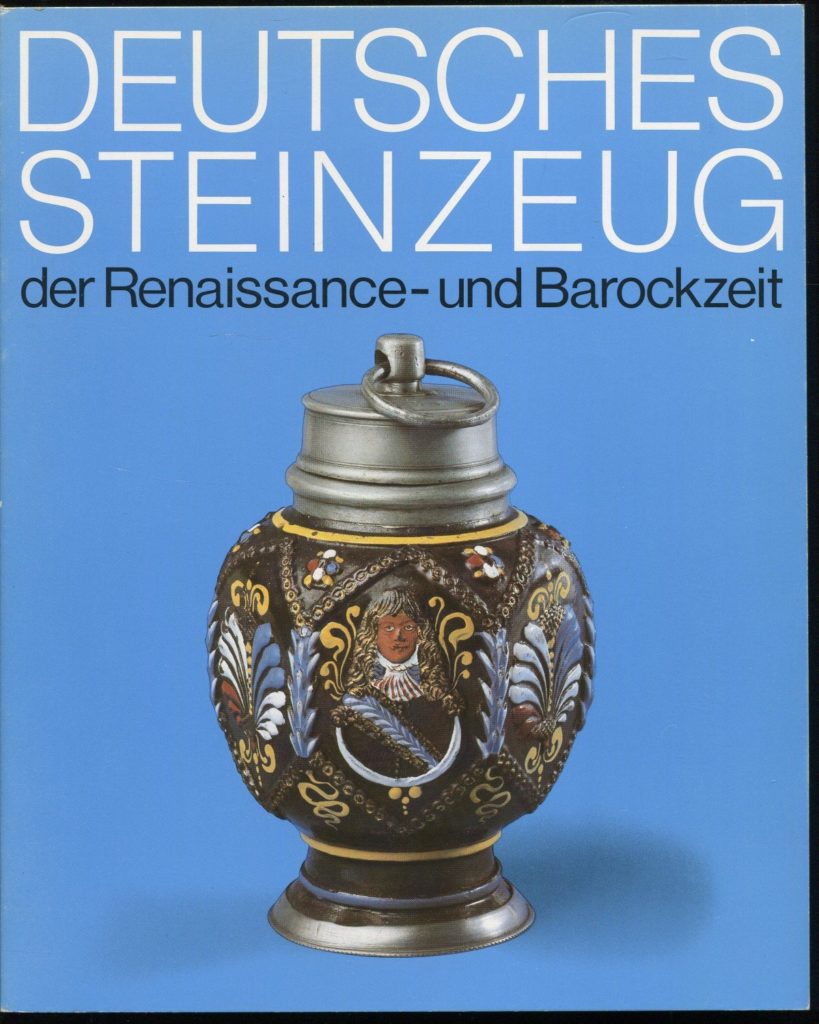
Klinge, Ekkart, and Dr Joachim Naumann. Deutsches Steinzeug der Renaissance-und Barockzeit: Ausstellungen, 23. 9.-25. 11. 1979, Hetjens-Museum, Deutsches Keramikmuseum, 9. 1.-17. 2. 1980,
Landesmusem im Schloss zu Oldenburg. Hetjens-Museum/Deutsches Keramikmuseum, 1979.
